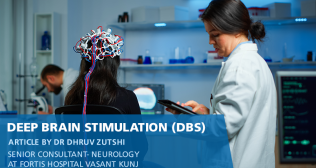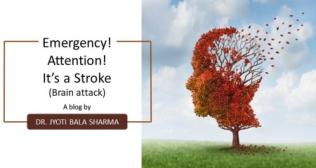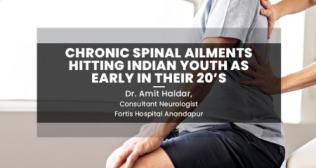
Hemorrhagic Stroke : Symptom, Causes & Treatment
A hemorrhagic stroke occurs when a blood vessel in the brain bursts open and starts leaking in or around the brain thus causing severe damage to the nearby nerve cells. As per several published reports, it’s been revealed that 15 percent of all strokes are hemorrhagic in nature. Additionally, hemorrhagic strokes are of two types – Intracerebral and Subarachnoid depending on the region and the cause of the bleeding.
In an intracerebral hemorrhage, the bleeding is caused by a broken blood vessel inside of the brain. This type of stroke is also regarded as the most common type of hemorrhagic stroke.
On the other hand, in a subarachnoid hemorrhage, the bleeding usually happens between the brain and the membranes around it. It must also be mentioned that unlike an intracerebral hemorrhage, a subarachnoid hemorrhage is fatal and nearly half of the individuals struck with one don’t survive.
Symptoms
Hemorrhagic strokes usually display the following warning signs including:
- Acute & severe headaches which occur without a warning usually at the back of the head. It’s usually described as the worst possible headache.
- Partial or total loss of consciousness.
- Vomiting or severe nausea, especially in tandem with other symptoms such as a headache.
- Loss of speech or trouble understanding speech
- Problems with your vision including loss of vision & double vision.
- Sudden paralysis, numbness or weakness of face, arm or leg – usually on one side of the body.
- Having difficulties while swallowing.
- Repeated fluctuation in the heartbeat accompanied by breathing problems.
- Sensitivity or intolerance to bright light.
- Stiffness around the neck.
- Seizures & Convulsions.
- Dizziness accompanied by a loss of balance or coordination.
In most cases, these symptoms emerge without any warning signals. These signs should be immediately recognized and prompt medical attention should be sought in case any of these symptoms are detected.
Causes
Understanding the risk factors and causes is vital. The most common causes of a hemorrhagic stroke are:
- A brain aneurysm – An aneurysm is a bulging, weak part of a blood vessel which is usually formed in arteries situated at the base of the brain.
- A brain arteriovenous malformation (AVM) – An AVM is described as a knot of abnormal blood vessels that links arteries and veins in the brain. Some people are born with this condition.
- Very high blood pressure.
- A severe head injury.
Besides, there are several risk factors which can increase the chances of an individual getting a hemorrhagic stroke.
- Age – With advancing age, the odds increase.
- Previous family history of stroke
- Diabetes
- Poor dietary patterns
- Lack of exercise
- Obesity
- Vices such as smoking & drinking alcohol excessively
Treatments
Once the symptoms are identified, a physical and neurological examination is recommended. Imaging scans of the brain through CT, MRI, & ECG scans can help in the diagnosis. Besides these tests, chest X-rays, blood tests and ultrasounds are also prescribed.
However, in case of emergencies, one should seek immediate treatment as it could potentially be the difference between life and death. Emergency treatment focuses on treating the hemorrhagic stroke by locating the source of the bleeding & controlling it followed by draining the skull and thereon, reducing the pressure in the brain. In case of an aneurysm, it can be fixed with a surgical clip.
These quick measures can help limit further damage to the tissue in the brain while also helping prevent recurrent strokes. Moreover, clot-dissolving medications will also be administered to further reduce the blood pressure, relieve pain & anxiety, and cure any headaches & seizures.
Once the bleeding has been controlled, surgery is recommended in order to prevent the reoccurrence of a hemorrhage. A surgery can also fix any blood vessel abnormalities which are usually associated in case of hemorrhagic strokes. Finally, the doctor in charge will suggest a rehabilitation program after taking into consideration various factors such as the individual’s age, overall health, and the degree of disability from the resultant stroke. The person might also be asked to revamp his lifestyle and ditch any unhealthy vices.



















